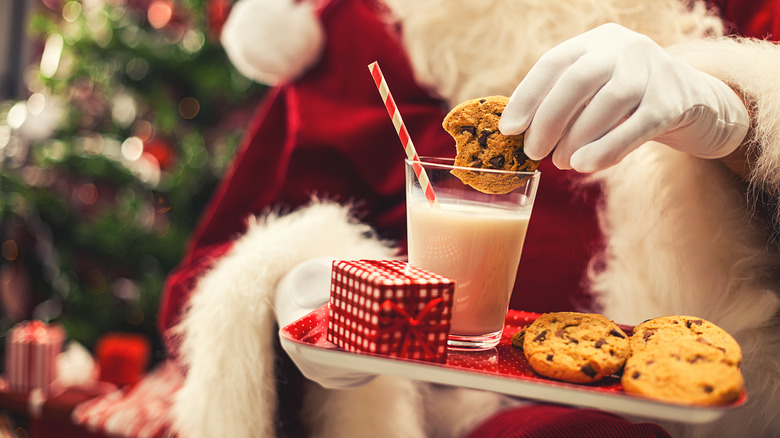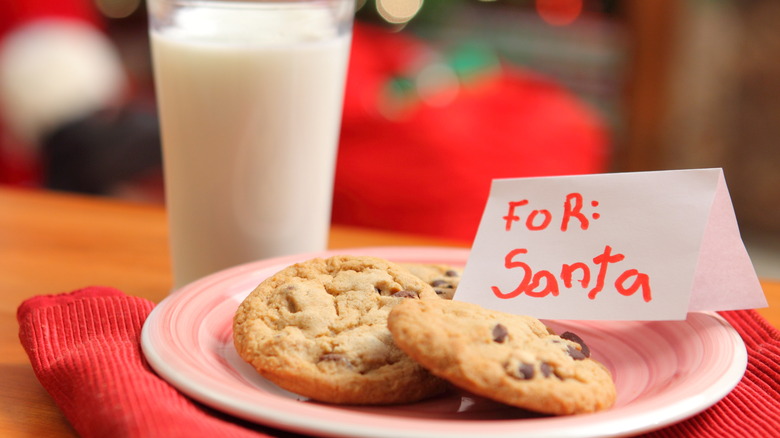Why Do We Leave Milk And Cookies Out For Santa On Christmas, Anyway?
Leaving milk and cookies out for Santa on Christmas Eve is a heartfelt (not to mention tasty) custom that blends elements of folklore, generosity, and the magic of the holiday season. The legend of Santa Claus has evolved over centuries, drawing inspiration from various historical figures. One of the earliest precursors to the white-bearded, red-suited, reindeer-driving elf is Saint Nicholas, a 4th-century bishop — and eventually the patron saint of children — recognized for his acts of kindness. His feast day, celebrated on December 6 by communities around the globe, involves charity to those in need, setting the tone for the Christmas spirit.
Fast-forward to the 17th century, when Dutch settlers introduced Sinterklaas, their version of St. Nick, to the New World. Over time, the notion of Sinterklaas merged with other European customs and transformed into the altruistic figure we now know as Santa Claus. Sinterklaas had a reputation for leaving small gifts and koekje (from which the word cookie originates) in the wooden klompen set out by the fireplace by children. So, where do the dairy products and baked goods for Santa come into play?
The practice of strategically placing a glass of milk and a plate of cookies by the tree emerged to show appreciation for the gifts bestowed by the jolly North Pole native. The simple yet delicious combination represented a gesture of hospitality and gratitude, ensuring he had an extra jolt of energy and nourishment during his long night of delivering presents.
The sweet tradition dates back centuries
During the Great Depression, the presentation of milk and cookies took on an even more poignant significance. For one, parents sought to teach their children important values during challenging times. As they emphasized the importance of giving to others, providing milk and cookies to Santa Claus on his busiest night of the year became a symbol of the enduring spirit of generosity and appreciation, even in the face of economic hardship. As the economy rebounded, families continued to prepare the humble snack, fostering a sense of unity and togetherness.
Today, leaving milk and cookies for Santa has taken on a new dimension. It has become a way for families to connect with their children, emphasizing the meaning of Christmas and the power of imagination. Children around the world eagerly prepare their offerings, oftentimes accompanied by notes for Santa. While the milk and cookies tradition has evolved, its fundamental message remains the same. It reminds kids and adults alike that no matter what adversities life throws at us, there's always room for love, compassion, and the pleasure that comes with sharing a moment of joy — even in the form of cold milk and warm cookies.

